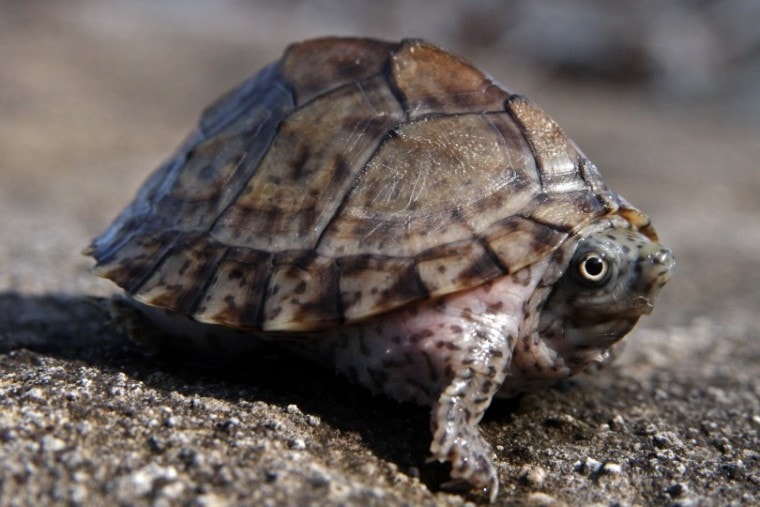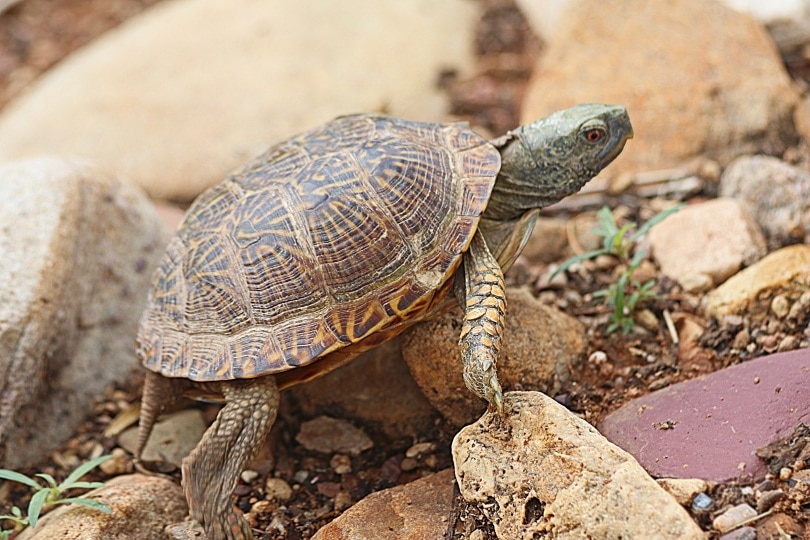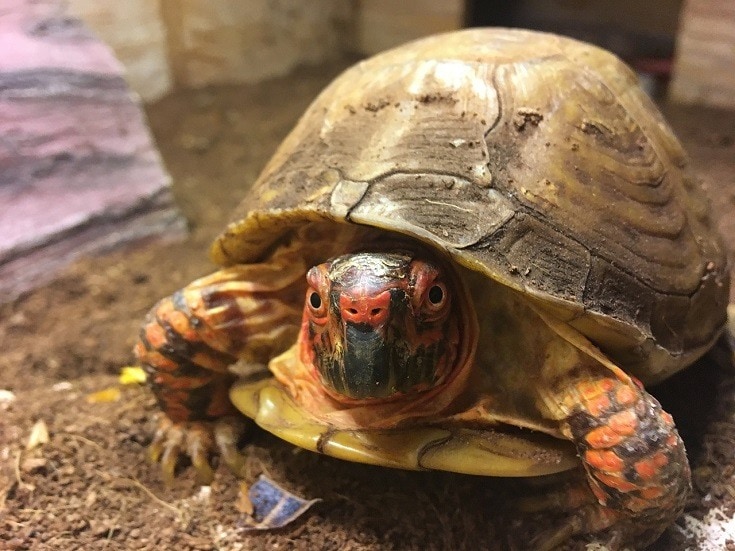
When you have a pet, you generally want to know everything you can about it. Some things you might wonder about your pet are frivolous, but others could be quite helpful in caring for your pal. For instance, if you can determine your pet’s age, you might be able to guess at how long it’ll be a part of your life, based on that species’ average lifespan under human care. That’s a good enough reason to want to discover your pet’s age, but you might also use this information when deciding how much to feed your pet or figuring out how large of an enclosure you might need when it is mature.
For many pets, there are relatively easy ways to make an informed guess about how old the animal is. Turtles, on the other hand, are a bit harder to accurately gauge. Still, there are a couple of ways you can at least get in the ballpark, and there’s one way to know for sure exactly how old your turtle is. If you want to figure out how old your turtle is, then keep reading.
The Most Accurate Way to Determine a Turtle’s Age

If you really want to know your turtle’s age, there’s one way you can be absolutely certain. This method is entirely accurate and is the only reliable method that exists for determining the exact age of any turtle. To use this method, you have to be there when the turtle is born!
Knowing a turtle’s birthdate is by far the most accurate way of determining a turtle’s age because you can simply count the years and months since its birth. Unfortunately, this is also the only way to be truly certain of how old any turtle is. It’s the only reliable method, as all other methods involve some sort of guesswork.
Of course, if you already have a turtle and you weren’t there to witness its birth, this method won’t be of much use to you. Luckily, there are a few ways for you to make educated guesses about your turtle’s age, which we’re going to discuss next.
Measure Your Turtle to Guess Its Age
Even experts can’t accurately determine a turtle’s age if they don’t know for certain when it was born. However, if you measure the turtle, you can use species standards to make an informed estimate about how old the turtle is.
When measuring a turtle, you’ll be measuring the length of its carapace. This just means that you’ll be measuring from the front of the shell by the turtle’s head to the back by its tail. Once you know the length of the turtle’s carapace, you’ll need to compare that to a size chart for that specific species of turtle. It’s essential that you find a size chart that matches your turtle’s species. Different species can reach vastly different sizes, so if you compare your turtle’s measurement to a size chart for a different species, you’ll be getting wildly inaccurate results.
Do Rings on the Shell Count Years Like Tree Rings?
If you look at the top of your turtle’s shell, you might notice that there are rings on its carapace. Many people believe that these rings can be counted to determine the turtle’s age, similar to how you can count the rings inside of a tree’s trunk to figure out approximately how old the tree is.
While counting rings might work for trees, it’s not an accurate method of figuring out a turtle’s age. Granted, the more rings a turtle has in each section of its carapace, the older that turtle probably is. The problem is that there’s no uniformity to those rings; they don’t equal a set amount of time. Each ring can represent a different length of time. If the turtle wasn’t in good health during certain times, rings may not have formed, and multiple rings could have formed quickly during other times in the turtle’s life.
Ask for a Professional’s Opinion
If you’ve tried measuring your turtle but still aren’t sure that you’ve come up with a satisfactorily accurate age, then it might be time to ask someone who’s a bit more experienced in the matter. You’ll have to look for a veterinarian that specializes in reptiles and amphibians and has a lot of experience with them. Such a professional might be able to offer you more insight into your turtle’s age than you can gather on your own. With luck, they’ve dealt with many specimens of the same species in the past and might have a deeper knowledge on the subject than you’ll be able to glean through a few minutes of internet research.

 How to Tell if Your Turtle Is Male or Female
How to Tell if Your Turtle Is Male or Female
Once you have a good idea of your turtle’s age, you may decide that you want to figure out what sex it is. Unfortunately, just like determining its age, figuring out what sex your turtle is can prove to be quite difficult. When turtles are young, they don’t display as many physical characteristics to differentiate between sexes. Sexually mature turtles are much easier to sex because they’re fully developed.
In many turtle species, males have a depression in their bottom shell that can help tell them apart from females. In some water turtles, including the ever-popular red-eared slider, males have long nails on the front feet, unlike females that have very short front nails. Female red-eared sliders also tend to be bigger, giving you a second indication of your turtle’s sex, though this isn’t the case with all turtle species.
If you can compare several turtles, the males will usually have fatter, longer tails. Their vents are also closer to the tips of their tales as compared to females.
Conclusion
There are many reasons why you might want to know your turtle’s age, including guessing its potential lifespan and gauging proper food rations. Too bad it’s so hard to figure out how old a turtle is! Unless you know when the turtle was born, accurately determining its age will be very hard. Still, you can make a semi-accurate guess based on the measurement of its carapace compared to a size chart for its species. It’s not the most reliable method, but it should get you in the right ballpark at least!
Related reads:
- How Long Do Turtles Live? (Average Lifespan Data & Facts)
- Can Turtles See in the Dark? What You Need To Know!
Featured Image Credit: Ryan M. Bolton, Shutterstock


 How to Tell if Your Turtle Is Male or Female
How to Tell if Your Turtle Is Male or Female





